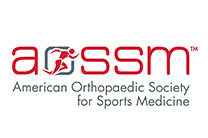What is a Fasciotomy?
Fasciotomy is a surgical treatment that involves removing or cutting away the fascia in order to relieve pressure in specific body locations.
Fascia is a band of connective tissue that connects muscles and internal organs together. It's mostly made up of collagen and is highly flexible. It reduces friction and provides support and protection to nerves and blood arteries that run through various muscles and organs.
What is a Groin Injury?
The groin is the area that connects your abdomen to your legs. Due to certain sports or recreational activities which involve repetitive twisting movements, the muscles of the inner thigh or lower abdominals can get stretched, injured, or torn resulting in a groin injury.
Preparations for a Fasciotomy
Preoperative preparation for a fasciotomy for a groin injury includes:
- A thorough examination is performed by your doctor to check for any medical issues that need to be addressed prior to surgery.
- Depending on your medical history, social history, and age, you may need to undergo tests such as bloodwork and imaging to screen for any abnormalities that could threaten the safety of the procedure.
- You will be asked if you have allergies to medications, anesthesia, or latex.
- You should inform your doctor of any medications, vitamins, or supplements that you are taking.
- You should refrain from supplements or medications such as blood thinners, aspirin, or anti-inflammatory medicines for 1 to 2 weeks prior to surgery.
- You should refrain from alcohol or tobacco at least a week before surgery.
- You should not consume solids or liquids at least 8 hours prior to surgery.
- Arrange for someone to drive you home after surgery.
Procedure of Fasciotomy for Groin Injury
- Prior to the procedure, you will be given regional or general anesthesia.
- The doctor makes either one or two incisions in the afflicted area during the surgery.
- An endoscope is inserted into one of the incisions areas to visualize the surgical area.
- Special instruments are inserted through the other incision to remove a small section of damaged fascial tissue and relieve pressure on the underlying nerves, muscles, and blood vessels.
- A local anesthetic is utilized to alleviate post-operative discomfort.
- The incisions are closed in layers and a sterile dressing is applied.
Post-Operative Care
The general postoperative care and instructions involve:
- You will be transferred to the recovery area to be monitored until you are awake from the anesthesia.
- You will be prescribed pain and anti-inflammatory medications as needed.
- You can expect pain and soreness in the groin area. Pain medications will be prescribed for comfort.
- Physical therapy and an exercise regimen will be gradually started to enhance the range of motion and help strengthen core muscles.
- Keep the surgical site clean and dry. Instructions on surgical site care and bathing will be provided.
- You may return to normal activities in a couple of weeks but return to sport will depend on the extent of muscle injury and may require 6 to 12 weeks or longer.
Risk and Complications
As with any surgery, there may be some risks and complications associated with fasciotomy for a groin injury, such as:
- Pain
- Infection
- Bleeding
- Anesthetic complications
- Blood clot
- Damage to adjacent organs
- Damage to nerves and vessels











